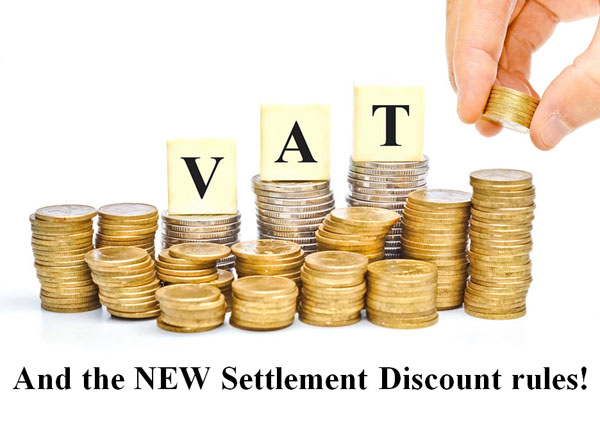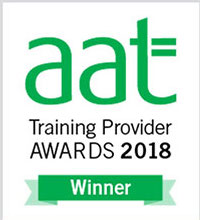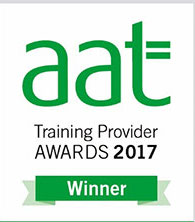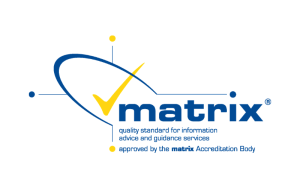Are you ready for your head to hurt!?!
Up until 31 March 2015, suppliers making offers of early settlement discounts were permitted to put on their invoice (and account for), the VAT due on the discounted price, even if the full price (i.e. the non-discounted amount) was subsequently paid. However, HMRC have changed the rules, so as of 1 April 2015, the new Settlement Discount rules apply (now known as Prompt Payment Discounts).
The AAT have updated all assessments to reflect the new rules (applicable to students on the AQ2013 syllabus as well as those on the new AQ2016 syllabus.)
New to AAT? You can find out more about AAT qualifications HERE:
Apart from being a tricky thing for students to learn about (and calculate!) early on in their accounting studies, the administration of this process used to be fairly straightforward:
EXAMPLE:
Gadget Ltd sells widgets for £100 each, net of VAT at 20% – i.e. £120 including VAT.
Normal payment terms are 60 days. However, because cash is tight for Gadget Ltd, they now decide to offer their customers a settlement discount of 5% if payment is made within 15 days.
(When you get to AAT Level 4, you can learn how to calculate the effective cost of doing this. Ow!)
- The VAT they now charge is £19.
£100 less 5% discount = £95.
£95 x 20% VAT = £19
(alternatively you can simply calculate £100 x 0.95 x 0.20 = £19) - If the customer pays within 15 days, they pay £95 + £19 = £114
- If the customer pays after 15 days, they pay £100 + £19 = £119.
The VAT does not impact on a VAT registered customer as they can reclaim it anyway. However for Joe Public, who isn’t registered, this treatment saves them £1. If they were buying something costing £10,000, they would save £100.
HOWEVER…
HMRC clearly did not like this and from 01 April 2015 they changed the rules.
I can only assume that some naughty suppliers offered silly settlement discounts:
EXAMPLE:
Fidget Ltd sells widgets for £100 each, net of VAT at 20% – i.e. £120 including VAT.
Normal payment terms are 60 days. However they have a new FD who decides to offer a settlement discount to (specified credit customers only) of 95% if payment is made within 1 hour!!??!! i.e. nobody can actually take advantage of it.
- The VAT they now charge is £1.
£100 less 95% discount = £5.
£5 x 20% VAT = £1
(alternatively you can simply calculate £100 x 0.05 x 0.20 = £1) - If the customer pays after 1 hour, they pay £100 + £1 = £101
- If the customer pays within 1 hour, they pay £5 + £1 = £6, but of course Fidget doesn’t let this happen. It is only worth doing for non VAT registered customers.
End result is that HMRC only receive £1 of VAT, instead of £20. This makes HMRC unhappy. They are probably also fairly unhappy about receiving £19 instead of £20.
HOWEVER…
This all changed on 1st April 2015.
Is the date significant I wonder?!!?
Suppliers must now account for VAT on the amount they actually receive and customers may recover the amount of VAT that is actually paid to the supplier.
This is not as simple as it sounds and makes the whole process of offering settlement discounts (prompt payment discounts) a considerable pain.
In order to explain the mechanics of how to implement the new rules, we thought it would actually be simpler (not sure if simple is the right word!?!) to repeat the wording from the HMRC Brief 49 (2014): VAT – Prompt Payment Discounts. However, before we do this, let’s refer back to the previous example and see what should happen under the new rules:
EXAMPLE:
Gadget Ltd sells widgets for £100 each, net of VAT at 20% – i.e. £120 including VAT.
Normal payment terms are 60 days. However, because cash is tight for Gadget Ltd, they now decide to offer their customers a settlement discount of 5% if payment is made within 15 days.
- The VAT they now charge is £19.
£100 less 5% discount = £95.
£95 x 20% VAT = £19
(alternatively you can simply calculate £100 x 0.95 x 0.20 = £19) - If the customer pays within 15 days, they pay £95 + £19 = £114
- If the customer pays after 15 days, they pay £100 + £20 = £120
This all looks very straightforward.
BUT:
Gadget Ltd initially issued an invoice showing £100 + £19 (less potential discount of £5).
If the customer pays after 15 days they will need to:
- either issue another invoice for the £1 extra VAT
- or issue a credit note for the first invoice and an invoice for £100 + £20
OR:
- Gadget Ltd could simply issue this invoice of £100 + £20 (less potential discount of £5) in the first place.
- However, if the customer does pay within 15 days, Gadget Ltd have charged too much VAT and will need to issue a credit note for the £1 excess VAT.
What a pain. Will Gadget Ltd really want to bother with settlement discounts at all??
For AAT assessment purposes, the treatment is: 1. We will issue an invoice to the customer for the full VAT amount. If the customer takes advantage of the Prompt Payment Discount, we will issue a credit note for the excess VAT amount.
Did you find this useful? Would you like to know more? If so, you might want to consider the AATs Foundation (Level 2) Certificate in Bookkeeping – you can read more about it HERE:
Now – grab a cup of coffee and a deep breath. Here is the HMRC explanation…
HMRC Explanation:
“A PPD is an offer by a supplier to their customer of a reduction in the price of goods and/or services supplied if the customer pays promptly; that is, after an invoice has been issued and before full payment is due. For example a business may offer a discount of 5% of the full price if payment is made within 14 days of the date of the invoice.
At present, suppliers making PPD offers are permitted to put on their invoice, and account for, the VAT due on the discounted price, even if the full price (i.e. the undiscounted amount) is subsequently paid. Customers receiving PPD offers may only recover as input tax the VAT stated on the invoice.
After the change, suppliers must account for VAT on the amount they actually receive and customers may recover the amount of VAT that is actually paid to the supplier.
Suppliers:
a) on issuing a VAT invoice, suppliers will enter the invoice into their accounts, and record the VAT on the full price. If offering a PPD suppliers must show the rate of the discount offered on their invoice (Regulation 14 of the VAT Regulations 1995 (SI 1995/2518)).
b) the supplier will not know if the discount has been taken-up until they are paid in accordance with the terms of the PPD offer, or the time limit for the PPD expires.
c) the supplier will need to decide, before they issue an invoice, which of the processes below they will adopt to adjust their accounts in order to record a reduction in consideration if a discount is taken-up.
d) when adjustments take place in a VAT accounting period subsequent to the period in which the supply took place the method of adjustment needs to comply with Regulation 38 of the VAT Regulations 1995 (SI 1995/2518).
e) suppliers may issue a credit note to evidence the reduction in consideration. In which case, a copy of the credit note must be retained as proof of that reduction.
f) alternatively, if they do not wish to issue a credit note, the invoice must contain the following information (in addition to the normal invoicing requirements):
- The terms of the PPD (PPD terms must include, but need not be limited to, the time by which the discounted price must be made).
- A statement that the customer can only recover as input tax the VAT paid to the supplier.
Additionally, it might be helpful for invoices to show:
- the discounted price
- the VAT on the discounted price
- the total amount due if the PPD is taken up.
g) if a business has adopted the option at (f), the VAT invoice, containing appropriate wording as described above, together with proof of receipt of the discounted price in accordance with the terms of the PPD offer (e.g. a bank statement) will be required to evidence the reduction in consideration, and the reduction to the supplier’s output tax (in accordance with Regulation 38 of the VAT Regulations 1995).
h) we recommend businesses use the following wording on the invoice:
“A discount of X% of the full price applies if payment is made within Y days of the invoice date. No credit note will be issued. Following payment you must ensure you have only recovered the VAT actually paid.”
i) if the discounted price is paid in accordance with the PPD terms, then the supplier must adjust their records to record the output tax on the amount actually received.
If the full amount is received no adjustment will be necessary.
Customers:
On receiving an invoice offering a PPD a VAT registered customer may recover the VAT charged, in accordance with VAT Regulation 29 of the VAT Regulations 1995.
As adjustments may take place in a VAT accounting period subsequent to the period in which the supply took place the method of adjustment needs to comply with Regulation 38 of the VAT Regulations 1995 (SI 1995/2518).
In practice this will mean:
a) if the customer pays the full price they record it in their records and no VAT adjustment is necessary.
b) if the customer pays the discounted price in accordance with the PPD terms on receipt of the invoice they may record the discounted price and VAT on this in their accounts and no subsequent VAT adjustment is necessary.
c) if the customer does not pay when the invoice is first issued, they must record the full price and VAT in their records as shown on the invoice. If they subsequently decide to take-up the PPD then:
If they have received an invoice setting out the PPD terms which states no credit note will be issued they must adjust the VAT in their records when payment is made. They should retain a document that shows the date and amount of payment (e.g. a bank statement) in addition to the invoice to evidence the reduction in consideration.
If the supplier’s invoice does not state that a credit note will not be issued, the customer must adjust the VAT they claim as input tax when the credit note is received. They must retain the credit note as proof of the reduction in consideration.”
It is therefore essential to get the paperwork correct, or suffer the consequences of an incorrect VAT Return.
One does wonder whether the risk of doing it wrong and consequently being hauled over the coals by HMRC will put off businesses from offering prompt payment discounts (PDDs) in future.
Will businesses bother with PDDs in future?
The AATs Foundation Certificate in Bookkeeping is an internationally recognised qualification, and, we’ve got a fabulous offer on it at the moment! Check it out here
We hope that these study tips have helped you! Whilst we are not able to respond to any specific questions you might have about our posts, do please let us know if there are any further topics you would like us to write about. If, however, you are one of our tutor supported students, please get in touch with your personal tutor who will be more than happy to help you.













